Max Cushioning: Why Runners Love High Stack Height Shoes
Over the last three years, the heel stack heights of shoes have grown significantly. We explore this trend
By LetsRun.comCurrently, the top-rated shoe on our BetterRunningShoes.com Website is the ASICS SUPERBLAST, which boasts a 45mm heel stack height, the distance between bottom of the heel of a running shoe and its insole, and an LRC Grade of 9.2.
Only two other shoes, the New Balance FuelCell SuperComp Trainer v1 and the Nike Air Zoom Tempo NEXT%, have higher heel stack heights, clocking in at a respective of 47mm and 46mm. These shoes also are highly rated with respectable LRC Grades of 8.9.
These stack heights are so high they surpass the 40mm heel stack height limit allowed by World Athletics for record eligible performances.
Yet consumers love these shoes.
Below we use data science and data from LetsRun’s BetterRunningShoes.com website to explore this development. We offer some explanations for why we are seeing such a large change in running shoe construction and why consumers are on board.
Stack Heights Over Time
The typical training shoe over the last decade has a heel stack height of about 31mm. However, this obscures the shift that has gone on in the industry. Figure 1 below presents the average heel stack height, broken down by year.1
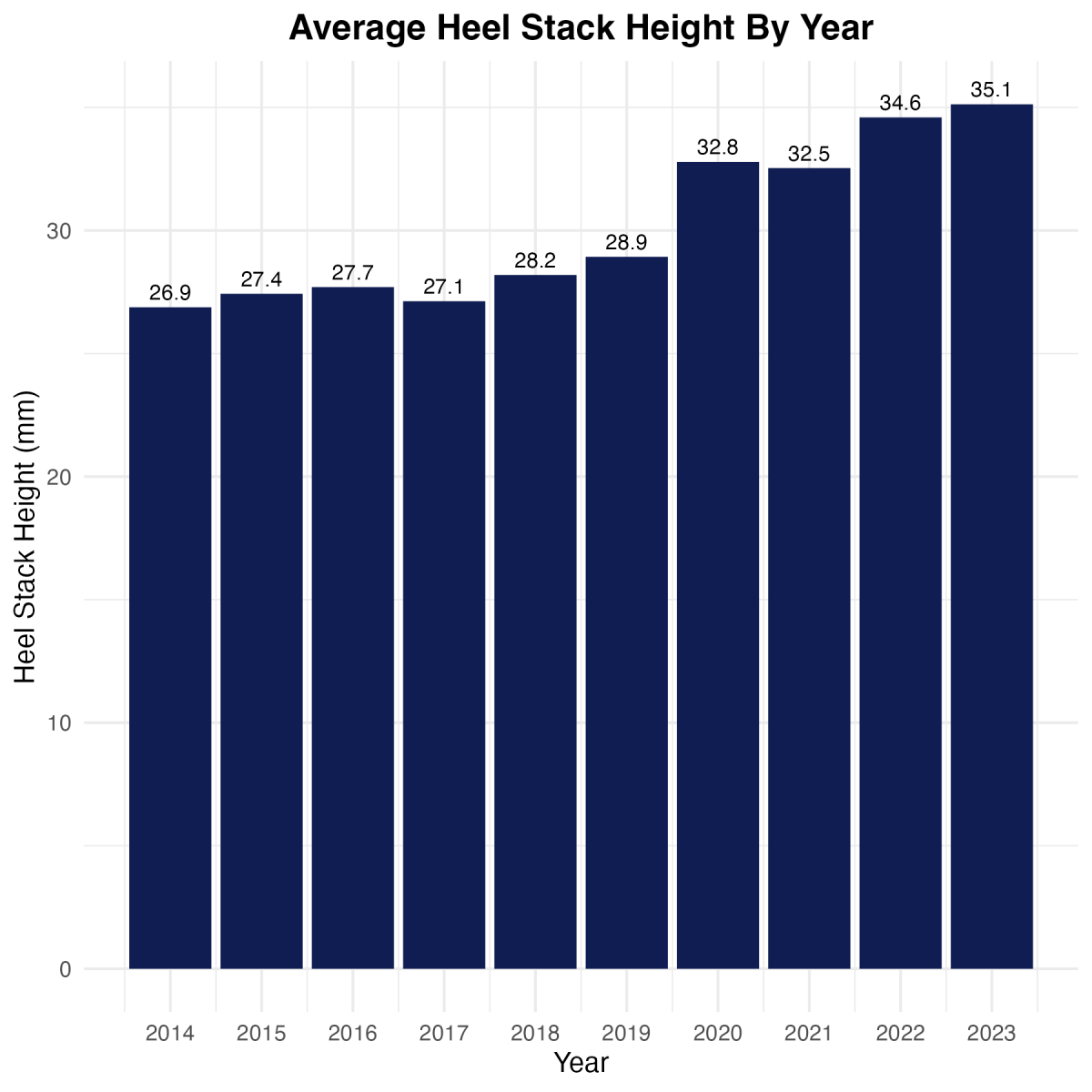 Figure 1
Figure 1
One can see that in 2020, the industry shifted toward making trainers with larger heel stack heights. The magnitude of the shift can be seen more clearly in Figure 2 below, which shows the distribution of heel stack heights for shoes made before and after 2020.
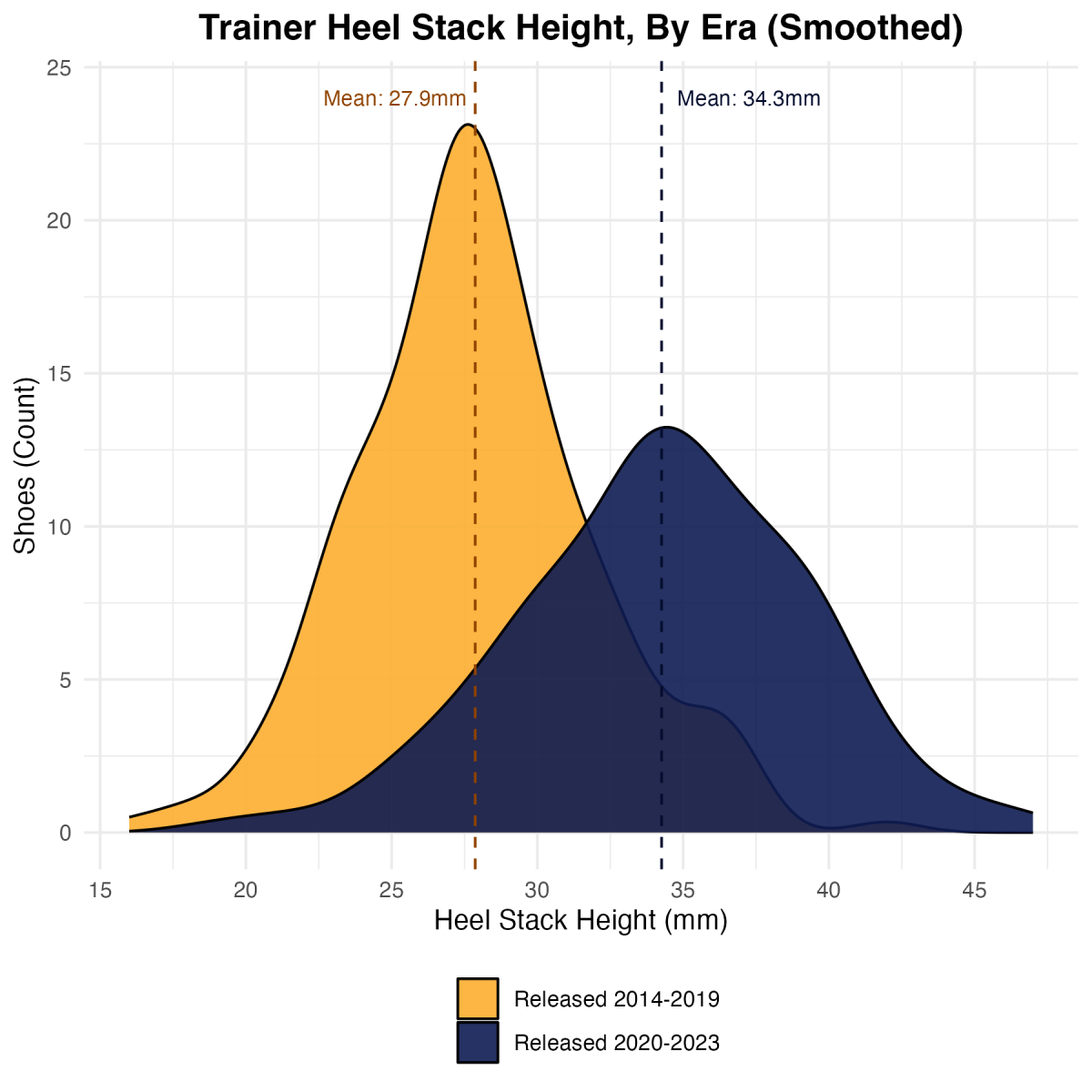 Figure 2
Figure 2
We can see that from 2014 to 2019, the average training shoe had a heel stack height of about 28mm. Over the next three years, the typical training shoe stack height ballooned to over 34mm, an increase of nearly 25% from the era that preceded it.
At the same time, the drop height, or the distance between the heel and the forefoot, actually decreased by a little over 1mm. In other words, shoes in recent years have gotten thicker.
Do Runners Like Thick Shoes?
The more important question, however, is whether runners like shoes with high stack heights. The definitive answer is: yes.
Shoes with higher stack heights generally have higher ratings than shoes with lower stack heights. Figure 3 depicts this relationship for reviewers’ overall assessments of shoes.
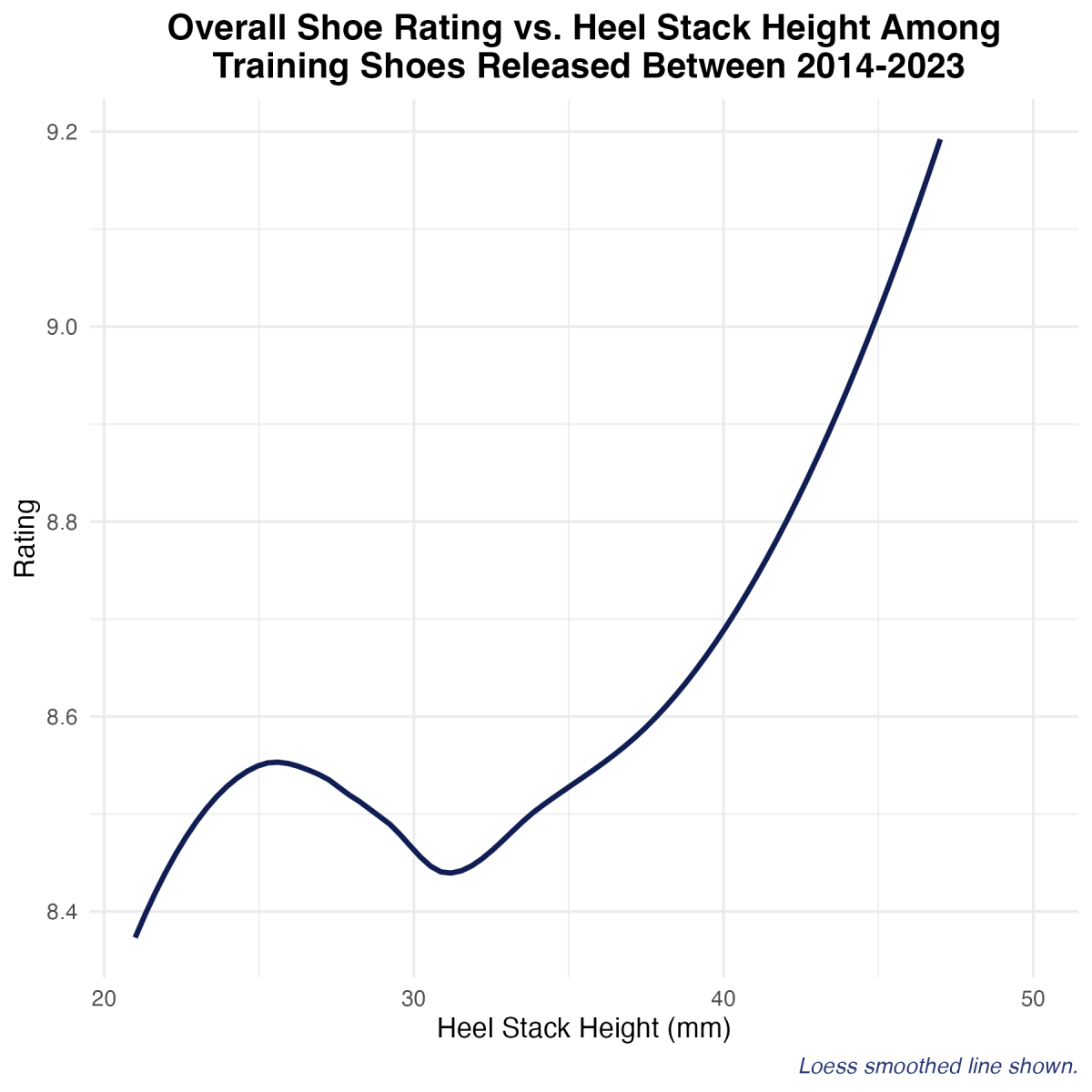 Figure 3
Figure 3
Reviewers generally tend to give shoes with above average stack heights better overall ratings. The overall rating curve inflects even more upward around 39mm-40mm, in the range of what we might consider maximalist shoes.
Figure 4 below shows the relationship between stack height and reviewers’ ratings of comfort, cushioning, and durability.
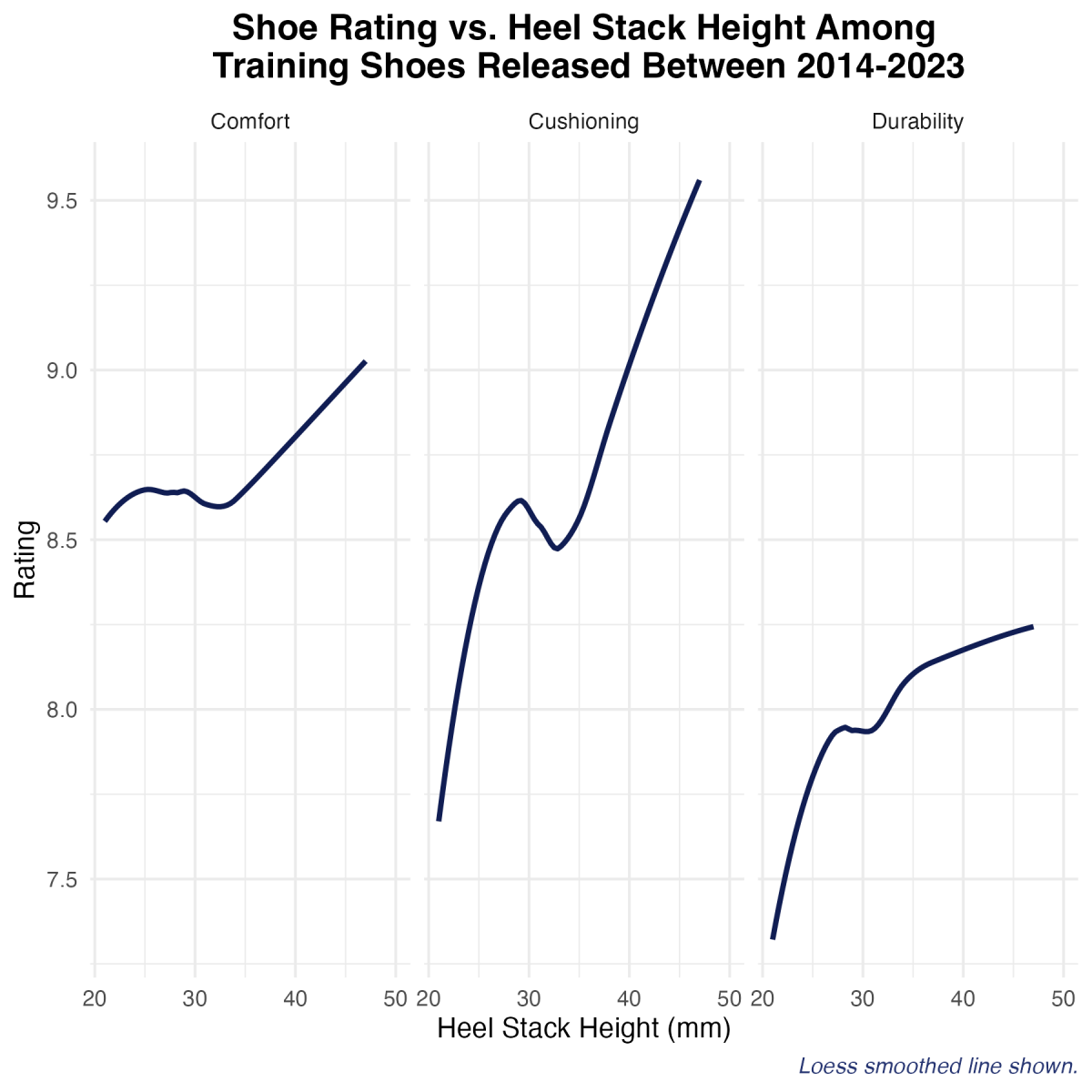 Figure 4
Figure 4
While bigger stack height shoes are rated higher on comfort and durability than lower stack-height shoes, they are rated much higher in terms of cushioning as shown in Figure 4. The typical cushioning score for the average 35mm heel stack height shoe is about 8.6. However, as stack heights approach 45mm, this score jumps to nearly 9.5. 2
Why do runners like big stack height shoes? While we can’t definitively say, the most likely culprit is runners love the extra cushioning they provide.3
What About Shoe Weight?
Larger stack heights in theory come at a cost. Figure 5 shows the relationship between heel stack height and weight.
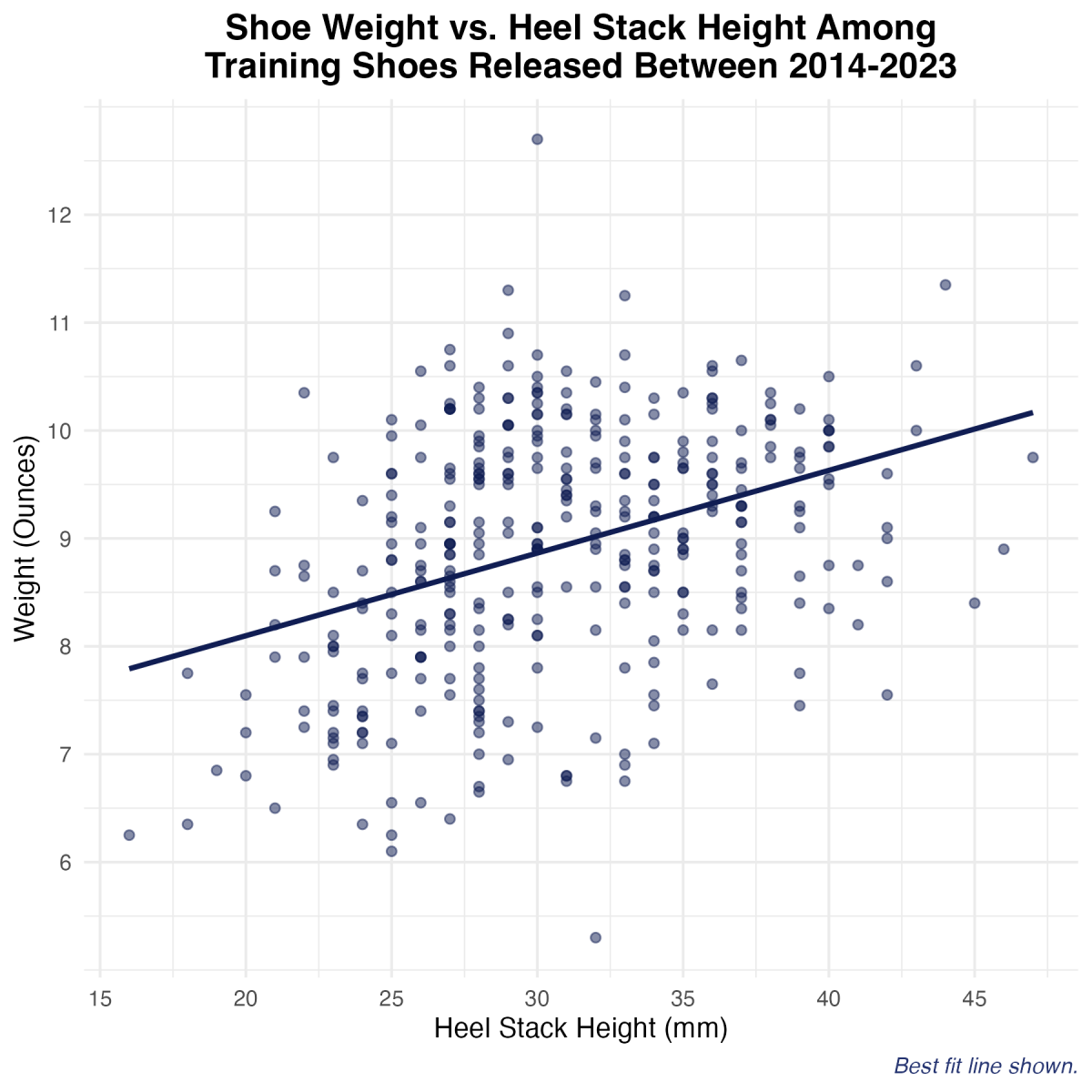 Figure 5
Figure 5
As one would expect, generally as shoes get thicker, they get heavier.
Moreover, we can see in Figure 6 that, as a rule, reviewers rate heavier shows lower overall. However, this obscures a non-linear relationship between weight and comfort: reviewers tend to rate both the lightest and heaviest shoes as more comfortable. A clue as to why is offered by the cushioning ratings: As shoes get heavier, reviewers generally rate the cushioning as better.
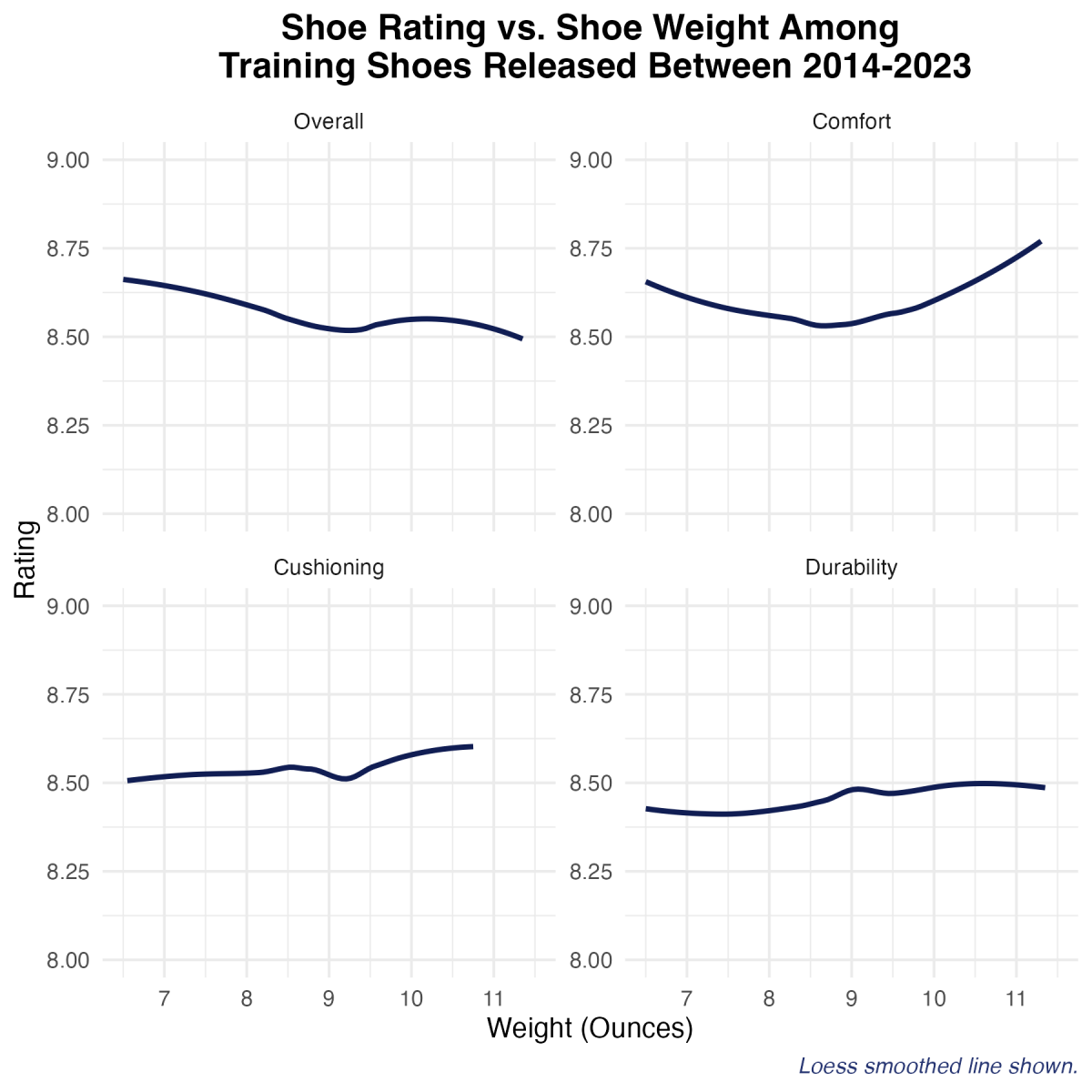 Figure 6
Figure 6
The Impact of Superfoams
Many runners are willing to take the tradeoff of extra cushioning maximalist shoes provide at the expense of some extra weight.
However, the emergence of superlight superfoams has effectively changed the equation regarding cushioning and weight. Runners now need to compromise very, very little in terms of weight to get a substantial amount of cushioning.
The ASICS SUPERBLAST with its massive 45mm stack height, weighs just 8.4 ounces.
Great cushioning in a lightweight shoe? That is a deadly combination that a lot of runners love.
Thick Shoes You Can Buy Now
When HOKA’s maximalist shoes first started getting some traction in the early 2010s, they were regarded with a lot of skepticism. But clearly, now the shoe designers are seeing what the LetsRun.com Better Shoe data science is showing: runners like their shoes thick. Well, perhaps we should say, runners like the superior cushioning and durability of thick shoes.
Below, we have listed the top 5 highest stack height shoes currently for sale at the time of publication. Looking to learn more about the current shoe market in general? Make sure to visit our Better Running Shoes Website, the running shoe review site that uses data science and reviews from serious runners to help you find the best shoes.
What shoe are you running in now? Review it now and help our data get even better.

ASICS SUPERBLAST

HOKA ONE ONE Bondi 8

HOKA ONE ONE Clifton 9

ASICS GEL-Kayano 30

Saucony Triumph 20
1 The first version of the Better Running Shoes Website launched in 2015, collecting data on shoes from 2014, the prior year. For this reason, all data in these analyses are limited to 2014 onward.
2 There are a small number of shoes with heel stack heights this thick, but they are all related very highly on cushioning, as this score reflects.
3 The skeptical reader may wonder if this relationship is statistically significant. We tested this by regressing each rating score (overall, comfort, cushioning, durability) on heel stack height and weight while accounting for the correlation between ratings among each shoe reviewed. These tests confirm the positive relation depicted in the above data for reviewers’ overall, cushioning, and durability ratings using a standard cutoff for statistical significance (p < 0.05). The partial correlation between comfort and heel stack height fell below the cutoff for statistical significance.
More: The Best Running Shoes You Can Buy in Fall 2023
The original version of article incorrectly linked to the second revision of the New Balance FuelCell SuperComp Trainer, which has a lower stack height than the original. This error has been corrected.








